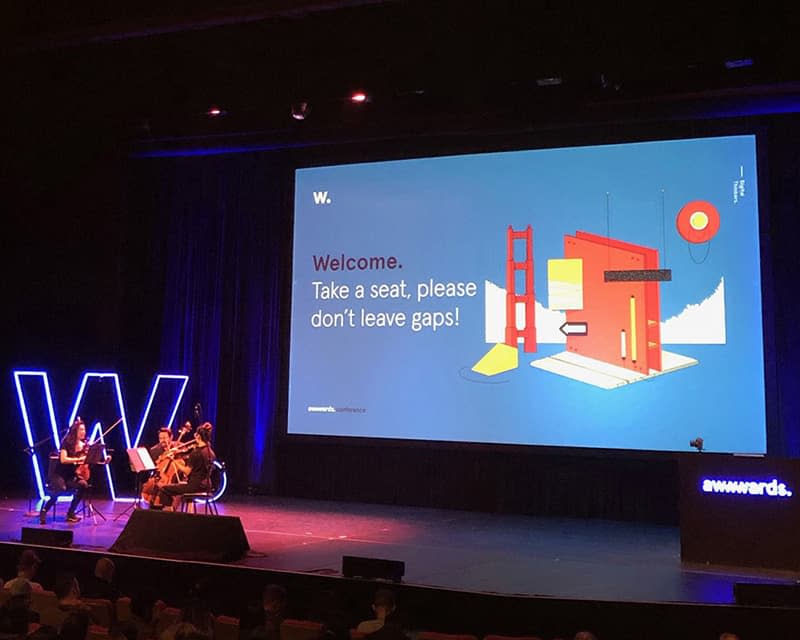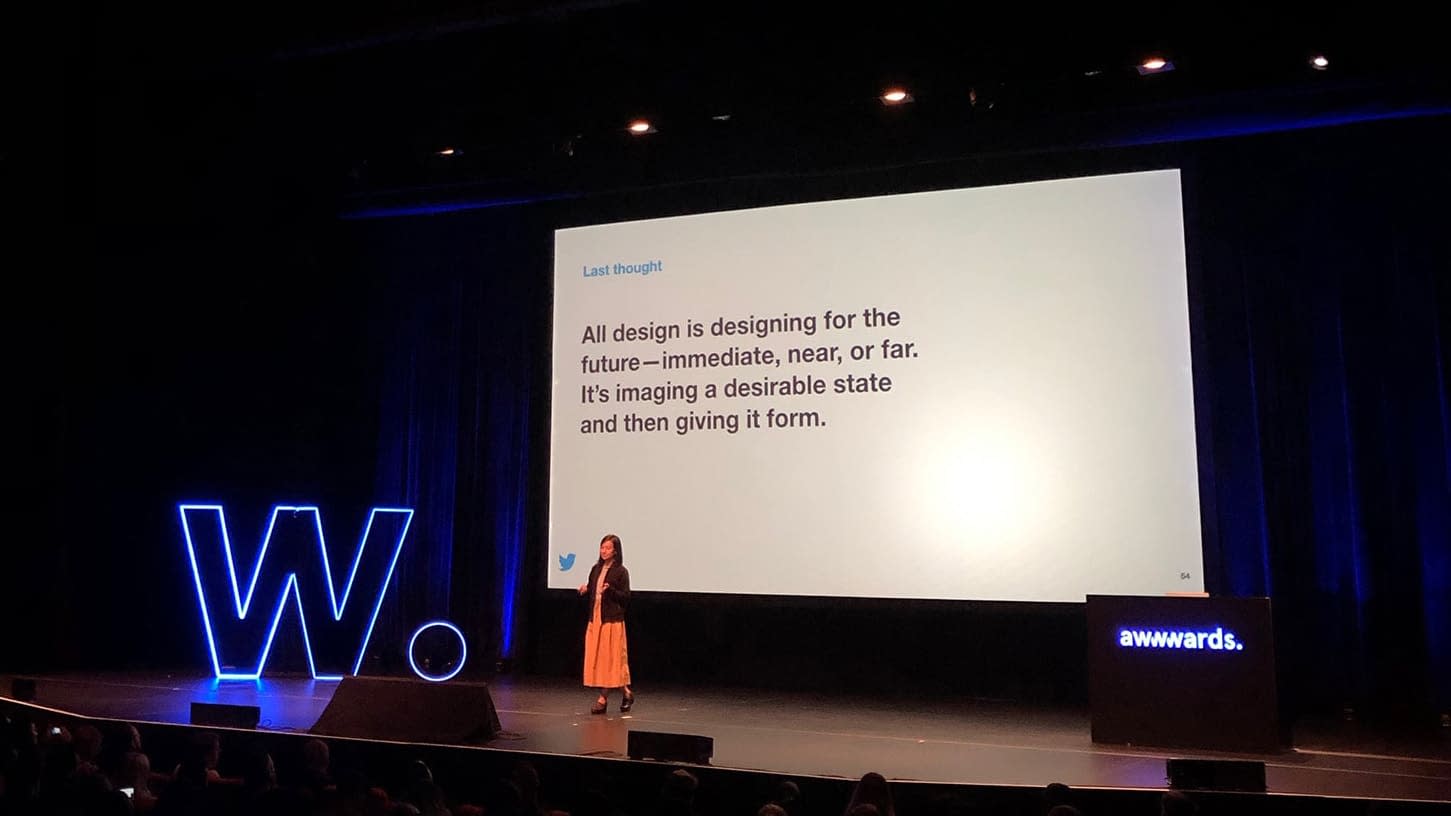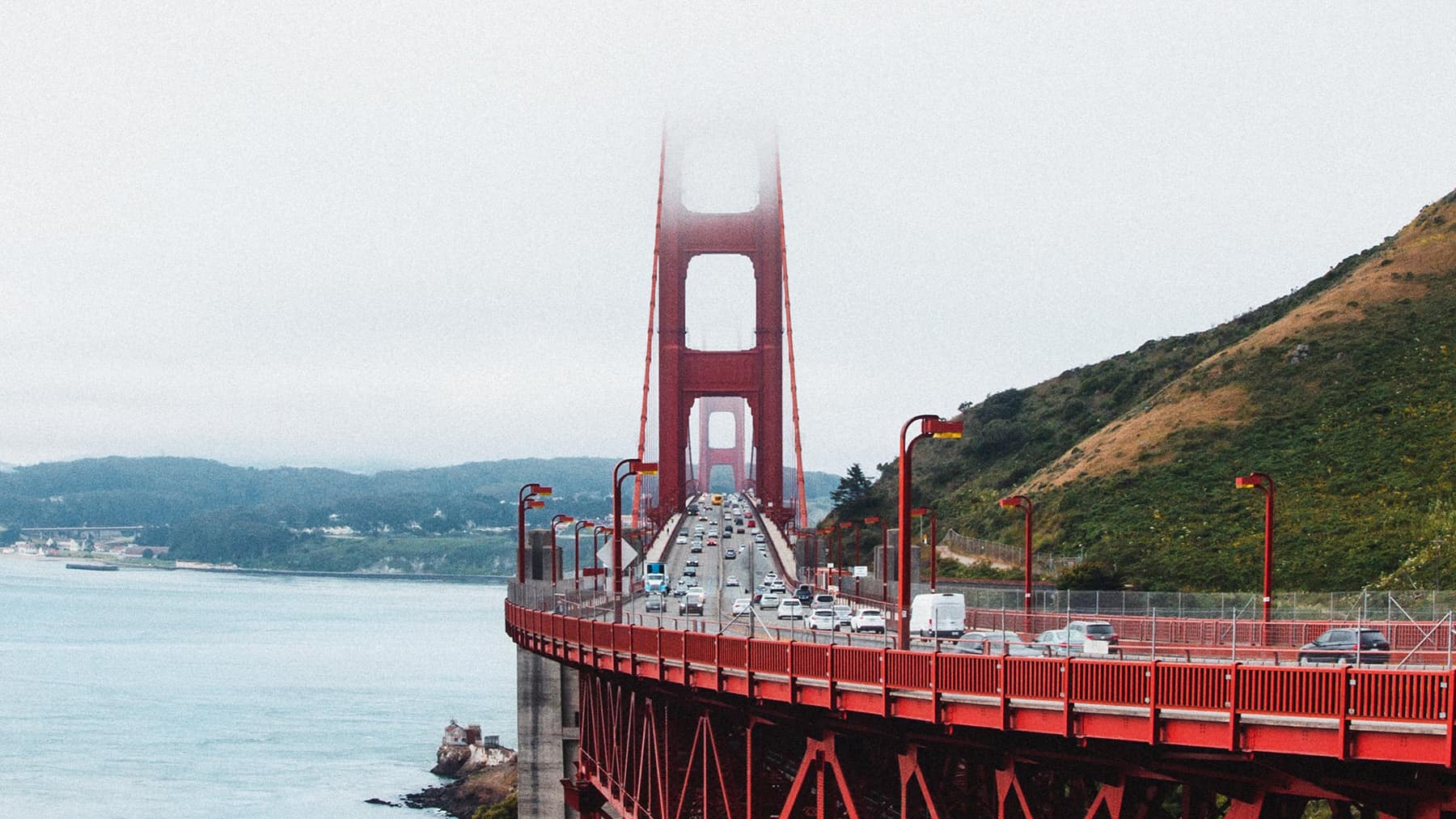Fresh off a great conference put on by Awwwards in San Francisco, here are a few of my takeaways.

But first, a little background. Awwwards is an organization that recognizes the best work of web designers, developers, and digital agencies around the world. They highlight industry-changing projects that combine technology and design to create outstanding digital experiences. Every year, they host a few conferences around the world to gather designers and developers under one roof. Industry leaders give talks and attendees have time to network with like-minded individuals who are designing and building the future of the internet.
We are Building the Future
Lisa Ding, a designer at Twitter, reminded us that as designers and developers, we are building the future. She said:
“All design is designing for the future—immediate, near, or far. It’s imagining a desirable state and then giving it form.”
She reminded us to not bypass the “idea” phase of a project but to instead come up with what you think is enough ideas and then come up with twice as many—or more. You can always distill your ideas down later.

Accessibility to Create
Vlad Magdalin, a co-founder of Webflow, pointed out that we often talk about the accessibility of using the web, but we don’t often talk about the accessibility of creating for the web. Meaning it’s not easy for people to create a website on their own. In fact, he said:
“Only 1 in 400 people know how to make a website.”
And that number doesn’t account for the rise in complexity of building for the web. There are now so many tools and different skill sets needed to create for the web that it’s impossible for one person to keep up with everything. You simply can’t be a “webmaster.” Vlad pointed out that while talent for the creation and sharing of ideas is equally distributed, the opportunity to express those ideas and turn them into a website or digital tool is not.
One of the biggest hurdles for people wanting to make websites is the disconnect between writing code and seeing something change visually. Many designers and developers have the mentality that “we’ve always done it this way,” but that is dangerous. We need a more direct connection to the medium of the web—something that Webflow and many others are trying to solve.
Robots Won’t Take Your Job
Vlad mentioned that the rise of tools like Squarespace and Webflow doesn’t mean designers will suddenly be out of work; rather, it opens the door for more people to harness the power of software and the internet to share their ideas with the world. Designers will be there to help people express their ideas in more structured, less ugly, and easier-to-use ways. It’s an opportunity for designers to focus on what they do best—being creative and solving problems—without needing to learn how to fix a merge conflict.
Hayley Hughes, from Airbnb’s design system team, reminded us that when it comes to design systems,
“designers no longer just design components themselves: they design policies that govern a system of components.”
We prove our value by considering problems from a higher level than just how things look on a page.
Peter Smart of Fantasy, a human-centered digital design firm, said that designers are responsible for creating magical experiences—something that artificial intelligence just can’t do. I mean, have you tried talking to Siri? As humans, we can surprise and delight users and create better overall experiences that are easier to use and understand. The best designs are done by humans for humans.

We are Designing for People
Robots won’t take your job if you remember that you’re designing for humans. Many speakers reminded us that we are doing work for humans and, as designers, it’s our humanity that makes us unique and allows us to create experiences that connect with people. Here are some of the main ideas that people shared:
Pixels Disappear. People don’t.
Dan Cedarholm | Co-founder of Dribbble
Use a story, surprise, and delight to convert users. Experience and emotional impact matter the most.
Matt Faulk | Founder of the agency Basic
Design is relationships. Don’t just be good. Do good. Judge the value of a feature by, “does it help users and remove cognitive load?”
Hayley Hughes | Design Lead at Airbnb
Design a human conversation. Use stories to share big ideas. Be clear. Be a friend. Be expressive.
Ben Hersh | Product Designer at Dropbox
Laughing is a way to connect to people. We (humans) pick the brands we connect with, so make a brand that humans can connect with.
Haraldur Thorleifsson | Founder and CEO of the agency Ueno
Humans aren’t always good. Be mindful of how a feature could be abused. Consider how this feature could be used to hurt someone.
Kat Fukui | Product Designer at Github
Balance technology with an understanding of humanity.
Travis Neilson | Senior Designer at Google and host of the Google Method podcast
Weird is important. Weird is human. Be intentional within your “weird” and don’t always be selling.
Brandy Porter | Director of Brand Design at Mailchimp

Honestly, there were too many excellent talks to boil down into a few main points. The future is bright for designers, developers, and digital thinkers. Let’s create the best internet possible. One that invites more people to share their ideas and is ultimately more human.

